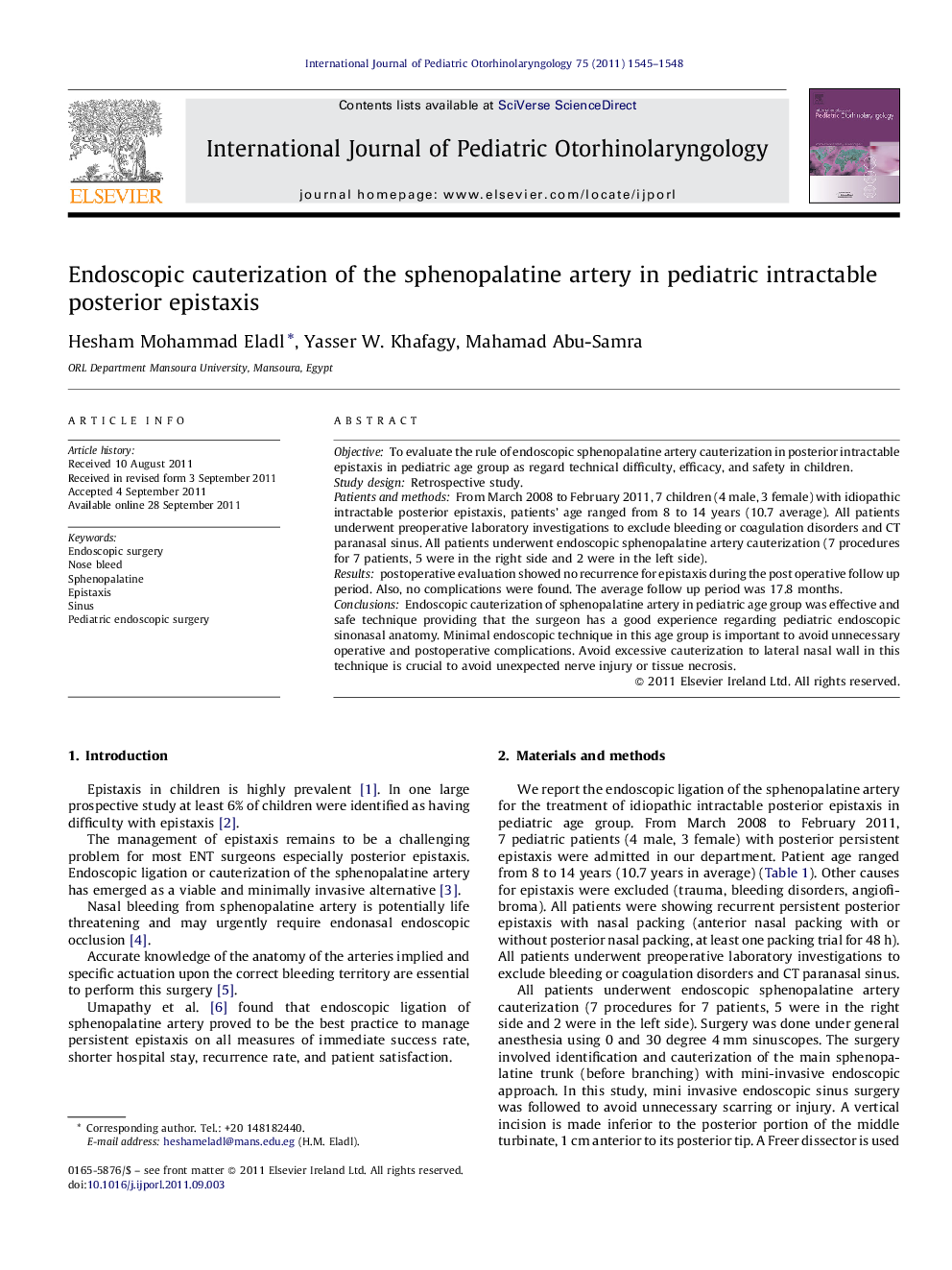| Article ID | Journal | Published Year | Pages | File Type |
|---|---|---|---|---|
| 4112521 | International Journal of Pediatric Otorhinolaryngology | 2011 | 4 Pages |
ObjectiveTo evaluate the rule of endoscopic sphenopalatine artery cauterization in posterior intractable epistaxis in pediatric age group as regard technical difficulty, efficacy, and safety in children.Study designRetrospective study.Patients and methodsFrom March 2008 to February 2011, 7 children (4 male, 3 female) with idiopathic intractable posterior epistaxis, patients’ age ranged from 8 to 14 years (10.7 average). All patients underwent preoperative laboratory investigations to exclude bleeding or coagulation disorders and CT paranasal sinus. All patients underwent endoscopic sphenopalatine artery cauterization (7 procedures for 7 patients, 5 were in the right side and 2 were in the left side).Resultspostoperative evaluation showed no recurrence for epistaxis during the post operative follow up period. Also, no complications were found. The average follow up period was 17.8 months.ConclusionsEndoscopic cauterization of sphenopalatine artery in pediatric age group was effective and safe technique providing that the surgeon has a good experience regarding pediatric endoscopic sinonasal anatomy. Minimal endoscopic technique in this age group is important to avoid unnecessary operative and postoperative complications. Avoid excessive cauterization to lateral nasal wall in this technique is crucial to avoid unexpected nerve injury or tissue necrosis.
